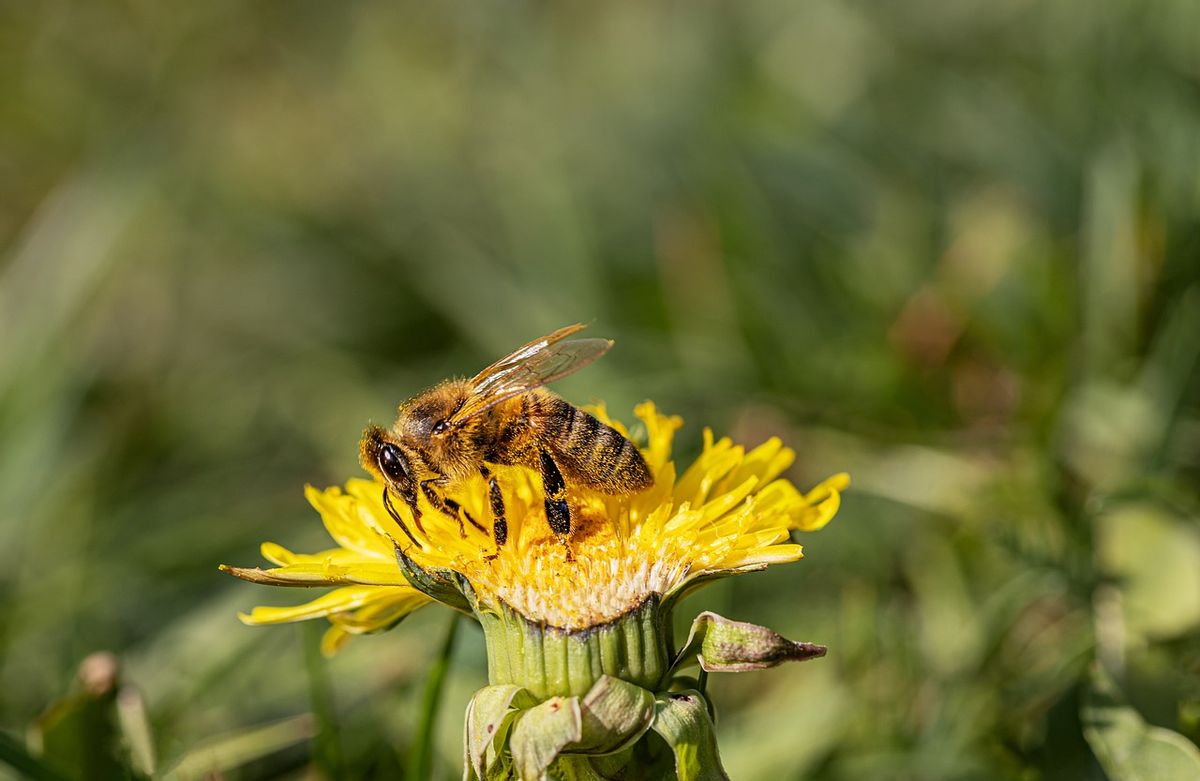While it is true that dandelions are helpful to bees in the earlier months of spring, there are other pollinating plants that are more nutritionally beneficial to the insects. In essence, bees don't "need" dandelions, but access to them certainly helps.
Every spring, social media posts (archived), blogs (archived) and articles (archived) circulate online claiming that true bee lovers should make friends with their backyard dandelions to provide important food sources for the buzzing pollinators. Take, for example, the below post shared to Reddit in 2021 (archived):
YSK that if you care about the bees, you shouldn't be mowing or killing the dandelions on your lawn in the early springtime.
byu/mrekted inYouShouldKnow
While it's true that dandelions provide some nutritional benefits to spring bees, the yellow flowers are not the most important food source for the insects. We have rated this claim "True."
Jonathan Larson, an entomologist at the University of Kentucky with expertise in pollinators, told Snopes that, broadly, it is "fairly accurate" that bees need dandelions in the spring.
"Flowers of most types will be handy to bees looking for something to eat, especially in the earliest parts of the growing season. So dandelions are an important species," Larson said in an email.
Dandelion flowers are among the first to bloom in most parts of North America, forming mostly in April and May, with some having been known to appear as early as February and as late as June, according to Ohio State University. It's the dandelion's early emergence that some suggest provides bees with an especially important benefit.
That being said, dandelions aren't the only important species to early-season pollinators.
"There are some traits of dandelions that make them attractive to bees; their yellow color, their open platform-like shape, the clusters they can be found in, and their ease of nectar access," Larson wrote.
Dandelions are considered by some scientists as a "plant for all pollinators," not just for particular species such as bees. There's also been discussion that dandelion pollen is not nutritionally sufficient for honeybees, though similar research doesn't necessarily reflect the same findings for native bees.
Snopes reported in 2023 that honeybees are not native to North America. Rich Hatfield, a conservation biologist with expertise in endangered species, told our newsroom at the time that there are over 20,000 known bee species in the world, roughly 3,600 of which are native to North America.
Larson added that while dandelions are undoubtedly beneficial to native bee populations, there is still contention surrounding whether they are better than other pollinating plants:
Even if [dandelions] aren't the "most important" of flowers, they are fairly ubiquitous, early risers, and are better than nothing. On the flip side, beyond possible nutritional deficiencies, some might argue that their non-native status makes them less desirable as something to encourage.
Others might worry about their "weedy" status, which makes them hard to use as the poster child flower for pollinator conservation. I have also argued in the past that they are very transient, we tend to have bursts of yellow flowers and then nothing, especially when compared with something like white clover which sticks around longer.
In certain parts of the U.S., bees are active as early as March, Larson noted.
"Some species, like bumble bees, start the year as lone queens looking for food and a hole in the ground to call their own. While she wanders, dandelions might be a nice royal treat to enjoy before bumbling off again," Larson wrote.
Other species — such as mining bees, sweat bees, and mason and leafcutter bees — will have somewhat staggered emergence times, coming out at different times to reduce competition. Honeybees, meanwhile, are active in the early spring to start foraging and rebuilding their colonies.
The question at the heart of this claim, some might argue, is whether urban and suburban landscapes should keep — not weed — their dandelions to provide more food resources for pollinators. Initiatives like "No Mow May" suggest leaving weeds, such as dandelions and clovers, in yards is a way to help pollinators.
"As long as those weeds aren't treated with insecticides while in bloom," Larson said, adding:
However, when talking about providing habitat or food for bees, it's a season-long situation. Dandelions may help earlier in the year but species that emerge after dandelion bloom peak need food too.
We have to consider offering a variety of bloom colors, shapes, and timing if we want to help all these buzzy friends. Bees and pollinators are not a monolith, each species has its own unique needs. For that reason, I hope people who are inspired to try and leave dandelions around go a step further in the future and set aside part of their landscape for pollinators and construct a pollinator habitat with lots of blooming plants that grow in succession.
Snopes has debunked other claims related to bees, which can be read here.

